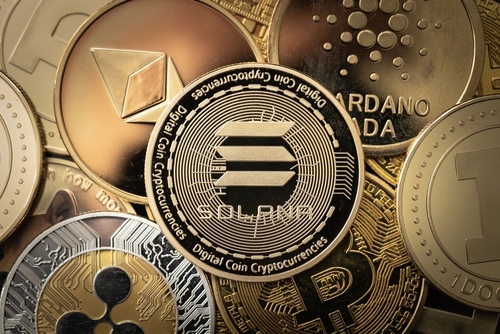
Solana and Ripple are two popular names in the crypto space. They are among the top ten crypto projects by market capitalization.
Even though they both fall under the category of altcoins, they are different in many ways. If you’re interested in using any of the two for investment or other purposes, continue to read and find out the differences between the two.
In this guide, we’ll arm you with all the information you need to make the right decision on which one is best for you. Without any further delay, let’s get to it.
What Is Solana (SOL)?
Solana is a top proof-of-stake (PoS) crypto network that has come to take an important place in the crypto industry. The network fondly referred to as the Ethereum Killer is known for its exceptional speed and scalability.
This is the idea behind the Solana project. With higher scalability, developers can create applications easily and at the lowest possible cost. In addition to the PoS consensus, Solana has proof-of-history, a mechanism that ensures the network never runs out of capacity.
The network is capable of adjusting to accommodate more transactions as the need arises and shrinking back when there is lower activity to save energy. This is the secret behind the infinite scalability of Solana.
The native token for the network, SOL, is used to pay for transaction fees on the network. The token is also used for staking to secure the network. All PoS networks need stakers to secure the network, and they are in turn rewarded with more SOL in the case of Solana.
SOL also serves as the governance token for SOlana. This means that SOL holders can vote on proposals for developing the network, giving them power to participate in the governance of the network.
As an investment asset, SOL has done well over the few years of its existence. It closed 2023 as the best performing asset among the top ten cryptocurrencies. The token has a circulating supply of over 460 million tokens, and a total supply of 580 million tokens.
The token doesn’t have a capped supply, so there will always be more tokens to release. This makes it an inflationary crypto token. There’s however a burn mechanism that removes 50% of the SOL used to pay any transaction fees from circulation, thus regulating the supply.
What Is Ripple (XRP)?
Ripple is not a network but rather a company that facilitates crypto payments using the token XRP. The company uses XRP Ledger (XRPL) as the network for facilitating transactions to enable companies carry out cross-border payments.
XRPL uses a consensus mechanism known as Ripple Protocol Consensus Algorithm (RPCA). This is the algorithm that makes it possible to send large amounts of funds on the network almost instantly and at a very low cost.
XRP serves as a bridge currency that is used to provide liquidity for the transactions which are usually international. XRP is a pre-mined token with a maximum supply of 100 billion tokens. The tokens are released by Ripple, which is also the issuer.
However, there are currently only 55 million tokens in circulation, with a total supply of 99 million tokens. Ripple holds the majority of the tokens, and has a burn mechanism that keeps removing some from circulation to ensure that the tokens become more valuable as time passes.
Which Is Better?
Solana is a popular network for smart contracts and decentralized applications, rivaling Ethereum. Therefore if your goal is to use a fast and scalable network for building applications with low fees, Solana works.
Ripple on the other hand is ideal for funds transfer across borders, and though the token is also used as an investment, SOL is far more popular and with higher growth potential because of the network’s scalability and low fees as more developers rush to it. For XRP, funds transfer is about the only use case.


